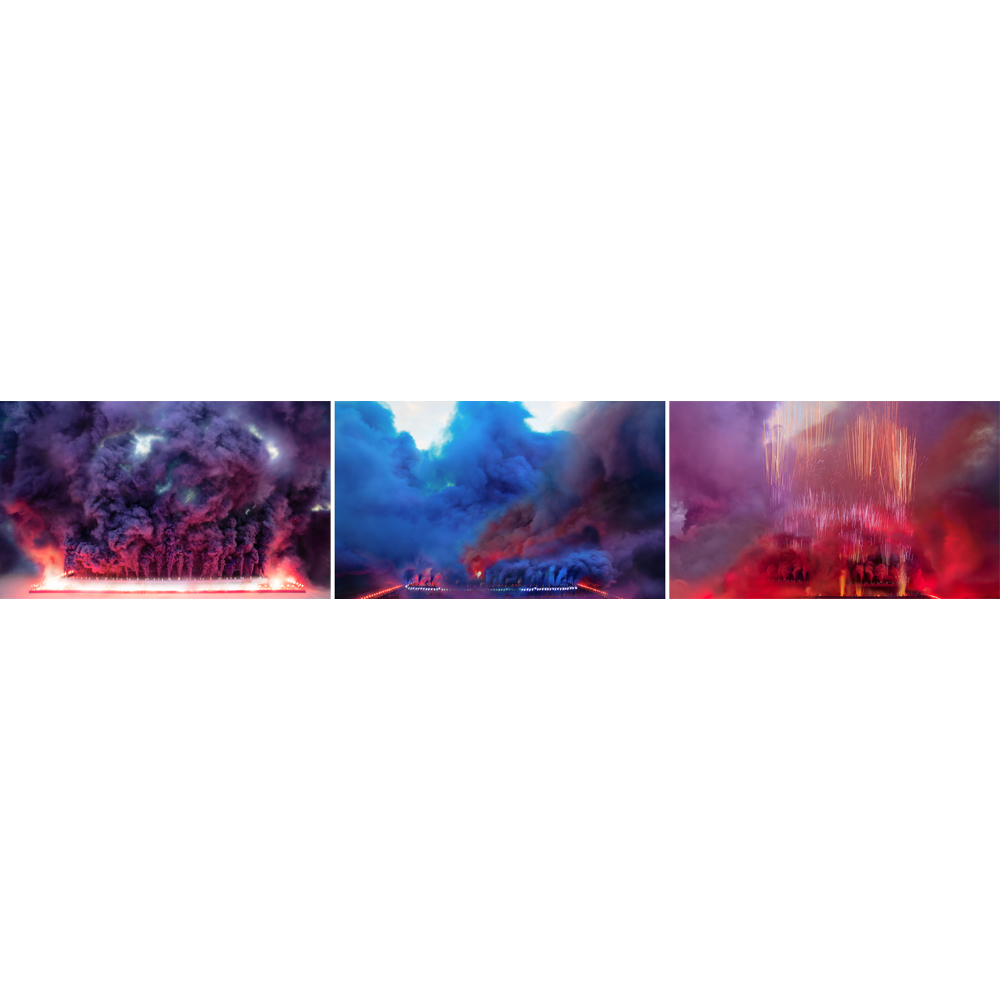Artwork Description
Judy Chicago – Purple Poem for Miami Triptych
Dimensions: 18 x 90″ finished size / 18 x 30″ plate/live
Year: 2019
Medium: archival pigment print
Edition: ed. 10
Judy Chicago’s “Purple Poem for Miami,” triptych documents a site-specific performance for the Institute of Contemporary Art, Miami in conjunction with her exhibition there.
Judy Chicago first turned to pyrotechnics in the late 1960s in an effort to feminize the atmosphere at a time when the southern California art scene was almost entirely male dominated. Between 1968 and 1974, Judy Chicago executed a series of increasingly complex fireworks pieces that involved site specific performances around California. Some of these works, titled “Atmospheres,” were intended to transform and soften the landscape, introducing a feminine impulse into the environment, while others focused on re-creating early women-centered activities like the kindling of fire or the worship of goddess figures.
Judy Chicago is a pioneer of feminist art since the early 1970s, Judy Chicago advocates issues of women’s liberation and independence through diverse media including paintings, drawings, sculptures, and collaborative installations. Her iconic work “The Dinner Party,” (1974–1979), which is now permanently installed in the Brooklyn Museum of Art’s Elizabeth A. Sackler Center for Feminist Art, is widely regarded as one of the most influential works of feminist art. With Miriam Schapiro, Chicago co-founded the Feminist Art Program at the California Institute of the Arts—the first program of its kind—and collaborated on the formative installation Womanhouse (1972). More recently, Chicago has expanded upon her efforts in gender politics, focusing on broader social issues. Her work has been exhibited extensively at venues such as the Los Angeles Museum of Contemporary Art, the New Museum, the Centre Pompidou, the Whitney Museum, and the Jewish Museum in New York.
Judy Chicago speaks of her work as “trying to infuse women and women’s history with a sense of the sacred and the valuable, because there are all these things associated with women that have been devalued: our bodies, our crafts, our history,” continuing on to say she “tried to bring the same thing to bear on [her] work.”

